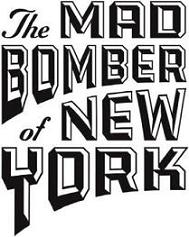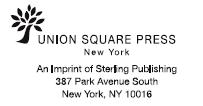The Mad Bomber of New York



The
EXTRAORDINARY
TRUE STORY
of the
MANHUNT
that
PARALYZED
a
CITY

Michael M. Greenburg

STERLING and the distinctive Sterling logo are registered trademarks of Sterling Publishing Co., Inc.
Library of Congress Cataloging-in-Publication Data
Greenburg, Michael M.
   The Mad bomber of New York : the extraordinary true story of the manhunt that paralyzed a city / Michael M. Greenburg.
      p. cm.
   Includes bibliographical references and index.
   ISBN 978-1-4027-7434-8
   1. Metesky, George P., 1903-1994. 2. Bombers (Terrorists)âNew York (State)â New YorkâBiography. 3. Mentally ill offendersâNew York (State)âNew Yorkâ Biography. I. Title.
   HV6430.M48G74 2011
   363.325092âdc22
   [B]
2010038795
2 4 6 8 10 9 7 5 3 1
© 2011 by Michael M. Greenburg
Article by Jamie James from
Rolling Stone
, November 15, 1979
© Rolling Stone LLC 1979.
All rights reserved. Reprinted by permission.
Distributed in Canada by Sterling Publishing
c
/o
Canadian Manda Group, 165 Dufferin Street
Toronto, Ontario, Canada M6K 3H6
Distributed in the United Kingdom by GMC Distribution Services
Castle Place, 166 High Street, Lewes, East Sussex, England BN7 1XU
Distributed in Australia by Capricorn Link (Australia) Pty. Ltd.
P.O. Box 704, Windsor, NSW 2756, Australia
All rights reserved
Sterling ISBN 978-1-4027-7434-8
Sterling ISBN 13: 978-1-4027-8952-6
For information about custom editions, special sales, premium and corporate purchases, please contact Sterling Special Sales Department at 800-805-5489 or [email protected].
Designed by Gavin Motnyk
To my mother, Elaine Greenburg, who always provides love and encouragement.
“Every normal person, in fact, is only normal on the average. His ego approximates to that of the psychotic in some part or other and to a greater or lesser extent.”
âSigmund Freud
CONTENTS
VII
: The “Twelfth Street Prophet”
VIII
: “The Greatest Manhunt in the History
of the Police Department”
XII
: “An Innocent and Almost Absurdly
Simple Thing”
XVII
: “Your Next Door Neighbor”
XVIII
: Rewards, Accolades, and Accusations
XX
: “As Plain as the Nose on Your Face”
XXI
: “His Days on Earth are Numbered”
XXII
: The Birth of Criminal Profiling
A
T 7:55 ON THE EVENING OF
D
ECEMBER 2, 1956, AS THE EPIC NARRATIVE
of
War and Peace
began to unfold on the screen of Brooklyn's Paramount Theatre, there was no mistaking the sudden and violent explosion that ripped through the rear of the auditorium for anything remotely connected to that evening's movie presentation. In a blinding moment of fierce light, smoke, and fire, a locally powerful device had detonated at precisely the moment determined by the simple timing mechanism within.
A thirty-six-year-old postal clerk named Abraham Blumenthal, who had taken his wife, Ruth, out to the movies for the first time in what seemed like ages, was immediately thrown from his twelfth-row seat. Fierce pain began to radiate from his left leg, where shards of jagged metal had inflicted their damage. “Suddenly I heard a report like a grenade. Then a small column of smoke rose in front of me and drifted across the screen,” Blumenthal would later tell reporters.
Panic began to envelop the room, and as
War and Peace
continued without pause, patrons began rushing for the exits. Seated about eighty feet from the explosion itself, a young mother, Doris Russo, and her sister Joyce were pummeled with scabrous debris, which settled deep in the face and scalp of each. Earlier that day the sisters had made their way through the retail menagerie of Fulton Street in downtown Brooklyn on a shopping spree with their mother, Mary Young, and Doris's two children in tow, and decided to cap off the evening with a movie. Mary Young would later say, “The shock and terror of what happened that evening will never leave my memory.”

The unarmed outer casing of the “infernal machine” that he had hurriedly prepared for use earlier that day had already been assembled. He had many of them securely stored where only he could find them. To the maddening frustration of law enforcement authorities, the raw materials that composed these creations were commonplace and generic; they could be purchased in virtually any retail outlet throughout the country, and they provided little if any evidence as to their origin. In keeping with his meticulous manner, the Bomber purposely omitted any specialized or unique components that would betray their points of purchase.
A length of galvanized iron or “coupling” purchased from Sears and Roebuck had been carefully fitted on each end with metal plugs (prudently purchased elsewhere) that were machine tooled and neatly threaded into the cavity of the pipe. With the precision of a machinist, he had drilled a small hole into the cylinder to allow the later arming of the device with a detonative material, and a so-called “filling plug”âa -inch allen screwâwas used to close the puncture. This, the Bomber would later state, ensured a “neater package.”
-inch allen screwâwas used to close the puncture. This, the Bomber would later state, ensured a “neater package.”
Alone in his garage, his castleâ“the one place on earth where nobody could bother me,” he would later recallâhe worked with painstaking resolve. The workspace was meticulously ordered; against one wall was a neat and sturdy workbench, and hanging above on evenly arranged hooks were rows of carefully polished tools. Situated around the structure in even intervals were seven windows of smoked glass that allowed neither sunlight nor view into this grim and very private world. An organized collection of blueprints lay on a wooden desk, and beside them, a worn Remington typewriter whose ribbon had been frequently replaced. Though the garage housed a rather out-of-place black English Daimler automobile, the focal point of the space was a metal machinist's lathe that ominously suggested craft beyond the typical household project. And beneath this well-oiled machine lay a small wooden box temporarily housing the various components of a deranged endeavor, stockpiled for later use and burrowed daily behind two soapstone tubs in the basement of his home. The ten-by-fourteen-foot detached garage, constructed of sheet metal and corrugated iron, was, in the later words of the New York City Police Department, “as clean and orderly as a hospital operating room.”
On the morning of December 2, 1956, with the structure of the device complete, he began the process of converting this harmless assemblage of iron into an instrument of hate and potent danger. He fashioned a fusing mechanism by carefully grinding a flashlight bulb on an emery wheel to reveal a small hole that he perfected with a nail file and filled with black gunpowder. To the case and center conductor of the bulb he had soldered two silk-covered, multistranded copper wires that led to a chrome-protected no. 7 Burgess battery used to heat the filament. Interrupting this nefarious circuitry was nothing more than the distance between the hour hand of a shock-resistant Timex wristwatch and the contact point of a metal ignition terminal. With a steady hand, he slipped the fusing mechanism into place and screwed the iron plug back onto the body of the cylinder.
